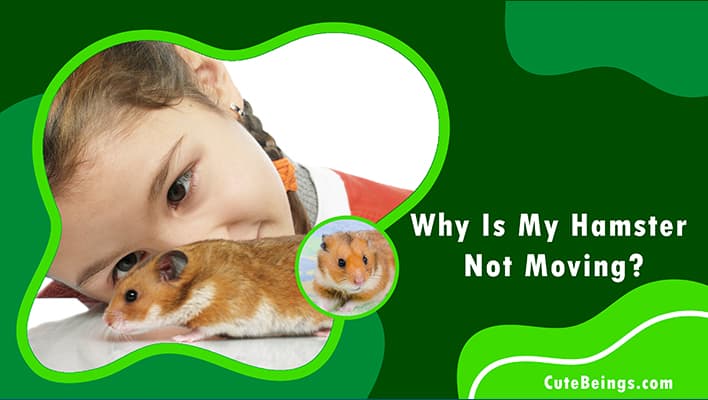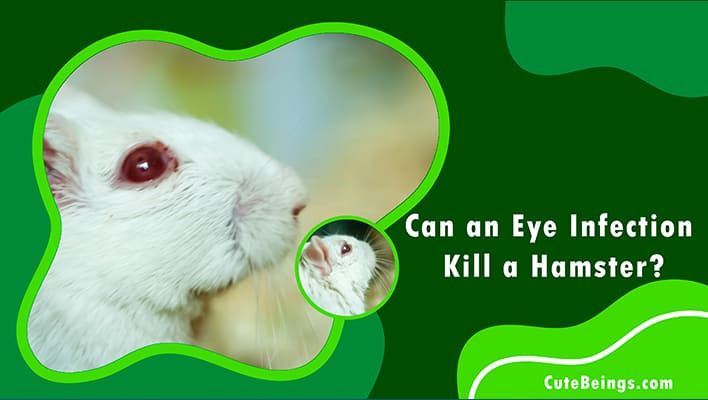Dog-loving families are more likely to have other pets in their homes. Having a dog and a hamster is a popular choice for pet owners. Can I get a hamster if I have a dog? Pet lovers must know the answer to this question.
You may worry about their safety if you have a dog and a hamster in the same house.
Relax! Dogs and hamsters should be kept separate, but you can have both. Your two pets can coexist in harmony if you choose a nice cage and follow safety guidelines. Swipe across the page to learn about the relationship between the hamster and the dog to get the solutions you’re looking for.
Table of Contents
Dog-hamster interaction
Dogs possess a keen and acute sense of smell. There is no doubt about it: it senses the presence of a hamster. The hamster will show curiosity by waging its tail or barking continuously when it first sees the newcomer. Because of the dog’s loyalty, we have faith that it will be capable of surviving with innocent young creatures. Yet they can be aggressive at times. In the same way, your pet dog may catch small animals in a corner. Depending on how they were raised and guided, dogs today may react differently when they find prey. They may occasionally be violent or remain calm.
Some breeds, especially hunting dogs, aren’t good with tiny hamsters because they are trained to hunt. Other, less aggressive ones, still hunt small creatures. To keep your hamster safe from injury, it is best to remain focused.
You can give your hamster a taste of canned dog food by feeding it a tiny portion. Never keep them close together or allow them to see each other when you are feeding them.
Teach your dog to stay calm around its little hamster friend.
Your dog will have to learn to treat the hamster with respect and look out for it. So it is important to train doggies well.
Slowly put your newcomers in touch with each other. It could be a dog to a baby hamster or an adult hamster to a puppy. Before entering the room with the hamster, you need to make sure that your dog is both harnessed and on a leash.
Let your dog sniff around. Make sure you can control the dog’s behavior and watch out for any strange changes. Allow the dog to remain at a distance of three to four feet from the hamster for a particular timeframe, stay a few minutes, and then leave the room with the dog.
Continue doing this a few times a day and a few days a week until it becomes comfortable with the routine and begins to behave normally.
When introducing your dog to a hamster, it is best if you can take the following precautions:
- Make sure the dog is wearing a collar and is under your control at all times.
- Never leave the two animals alone together.
- Always provide a secure enclosure for the hamster.
- Allow the new pet to become accustomed to your home’s environment, food, and routine activities before introducing it to strangers.
- Treat your dog’s friendly attitude with something it loves most.
- Keep the way you express love and care for both pets the same, no matter which one you’re with.
Note your dog’s body language.
Aggressive signs
- Growling or barking.
- Don’t obey commands.
- Staring with baring teeth.
- Holding ears and tail erect.
Calm, interesting signals
- Barking and remaining watchful
- Panting and lying down with her chin resting on its paws.
- Tail bobbing.
- Sniffing
- The body appears to relax: it is simply not mad.
Are Hamsters Nervous Around Dogs?
Hamsters have weak eyesight but a great sense of smell and hearing and may immediately identify a predator. If they feel threatened, they’ll be upset. You can tell if your hamster is anxious because it will spend more time along the cage walls, where they feel more secure.
As well Some hamsters urinate or defecate when scared or upset, while others bite to show their mood. You should watch for changes in behavior to ensure your hamster is comfortable around your pet dog.
Dogs won’t eat hamsters. However, they are still capable of tracking them down. Therefore, do not let the dog enter the room by itself to reach the hamster cage. It might put hamsters’ lives at risk.
Guidelines To Keep Hamsters Safe
- Glass cages are preferable. Glass tanks don’t have openings your dog can reach through. They’ll withstand hamster chewing, so your pet won’t escape and get hurt.
- Place the cage a safe distance away from heating vents as well as direct sunlight to reduce the risk of overheating and respiratory problems.
- If you decide to use a wire cage, you must measure the distance between the bars. As a result, neither the dog can reach nor the hamster will be able to escape while you’re away from the house. At the very least, clean the cage once a week.
- Your hamster will be less likely to try to flee if it has a comfortable and spacious habitat to live in. Having a lot of room inside might make it easier to breathe, move around, and get a good supply of fresh air. However, no room should be given for the dog’s paws to enter the cage.
- Hamsters love toys and playthings. Thus, entertaining your hamster will prevent escapes. Give it an exercise wheel with a solid floor and a few chew toys. Make their day more interesting.
Read More…….
- Consider keeping your hamster in a home office or spare bedroom, as your dog will most likely visit the living room and den.
- It’s crucial that the cage be high if you can’t totally separate your dog and hamster. If you try to make your dog and hamster companions, your hamster may get hurt.
- Exercise is necessary for a dog’s and hamster’s healthy appetite because it burns off excess energy. However, your dog should not be allowed to play with the exercise ball, wheels, climbing options, or any other hamster plastic toy. Such actions have the potential to ruin things, and the hamster might even decide against playing again.
- In particular, when your dog is barking near the hamster, do not punish or yell at them. There is a possibility to affect mental health by such a minor difference between you and them. You should instead reward quiet behavior.
Dog bites can harm hamsters.
If you have a dog and a hamster at home, attempt to control the barking and loud sounds. This high-pitched screaming can stress out hamsters with sensitive hearing. Or else, keep the cage high enough so your dog can’t see the hamster.
A dog bite can seriously harm the hamster’s health and cause injuries. Dog bites frequently cause internal injuries, front leg damage, and eye damage. Sadly, some animals are badly injured and may die while being taken to a veterinarian. A wounded hamster may exhibit difficulty breathing, sudden anger, squeaks, cries of pain, bleeding and swelling of body parts, and limping or sleeping more than usual. Some bite their fingernails or constantly wash their faces. It’s a way they settle down.
Hamsters are quite good at hiding their discomfort, but doing so will cause severe damage to their mental health and will raise their stress level, which will result in abnormal behaviors and a decreased appetite. These wonderful creatures have their own needs, including safety and proper care.
Human interaction is essential to a hamster’s well-being. It brings happiness to them and ensures that they are at ease at all times. When necessary, the owner should be aware of how to foster the animal’s trust while providing appropriate in-home therapies.
Adore your pets.
Pets relieve stress, and depression while increasing exercise and liveliness. Animal care helps kids grow up confident and active. Pets can also be a great source of emotional support for the elderly.
Dogs are supposed to be humans’ most caring best companions. The closer they get to the family, the more they fall in love with us. Besides, hamsters are adorable little mischievous creatures that make us happy.
Small children love them both in advance, and there is no harm in adopting them together. However, it is the entire responsibility of the owner to ensure the physical and emotional well-being of both creatures. Having a family veterinarian is a must for such animal enthusiasts.

Hello, my name is James and I’ve been caring for tiny pets for over 14 years with a passion. I enjoy passing on my expertise to other individuals in order for them to have the same amount of enjoyment as I do.




